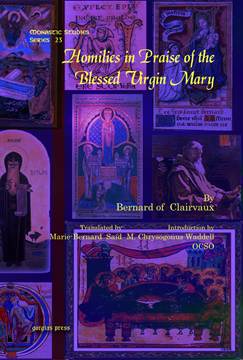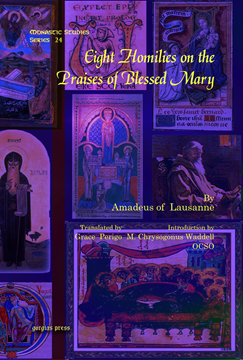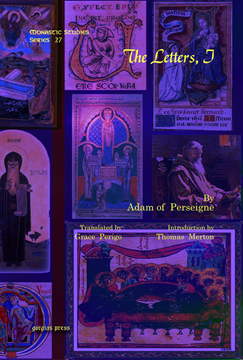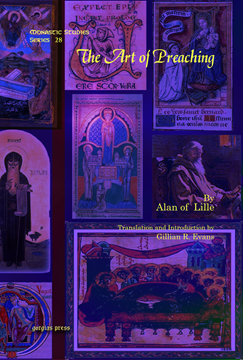Homilies in Praise of the Blessed Virgin Mary
By Bernard of Clairvaux; Translated by Marie-Bernard Saïd; Introduction by M. Chrysogonus Waddell OCSO
Series: Monastic Studies Series 23
ISBN: 978-1-60724-201-7
The young abbot meditates on the singular role of the Virgin Mother of Christ 'to satisfy [his] own devotion', and in doing so bequeathes his own love of Mary and of Scripture to his Order and to the Church.
$142.00 (USD) $85.20 (USD)
Eight Homilies on the Praises of Blessed Mary
Series: Monastic Studies Series 24
ISBN: 978-1-60724-202-4
Amadeus became a monk of Clairvaux in 1125, just about the time its abbot, Bernard, began to be noticed by the Church at large. After twenty years in the cloister, Amadeus became bishop of the troubled diocese of Lausanne. Reform and renewal did not come easily. Amid political skullduggery, as well as the demands of pastoral and administrative duties, Bishop Amadeus managed to write–perhaps to preach–these eight homilies in praise of Mary. Formed as a monk under the charismatic influence of Saint Bernard, Amadeus retained a distinctive piety which finds eloquent expression in this series of sermons, almost all that survives from his pen.
$116.00 (USD) $69.60 (USD)
In Praise of the New Knighthood
A Treatise on the Knights Templar and the Holy Places of Jerusalem
Series: Monastic Studies Series 25
ISBN: 978-1-60724-203-1
The monk and the knight—the two quintessentially medieval European heroes—were combined in the Knights Templar, men who took the monastic vows and defended the holy places and pilgrims. With characteristic eloquence, Bernard of Clairvaux voices the cleric's view of the knights, warfare, and the conquest of the Holy Land in five chapters on the knight's vocation. Then, in another eight chapters the abbot who never visited the Holy Land provides a spiritual tour of the pilgrimage sites guarded by this 'new kind of knighthood.'
$143.00 (USD) $85.80 (USD)
Sermons on the Song of Songs, II
By Gilbert of Hoyland; Translated by Lawrence C. Braceland SJ
Series: Monastic Studies Series 22
ISBN: 978-1-60724-204-8
Taking up Saint Bernard's unfinished sermon-commentary, Gilbert ruminates on verse 3:1-5:10 in forty-eight sermons, leaving the task to be finished by John of Ford.
$165.00 (USD) $99.00 (USD)
The Letters, I
Series: Monastic Studies Series 27
ISBN: 978-1-60724-205-5
These are the letters of Adam of Perseigne, Spiritual director to kings and clerics, nuns and nobles and adviser to Richard the Lion-hearted; Adam also found favor at the witty court of the Countess of Champagne.
$166.00 (USD) $99.60 (USD)
The Art of Preaching
By Alan of Lille; Translation and Introduction by Gillian R. Evans
Series: Monastic Studies Series 28
ISBN: 978-1-60724-206-2
Preaching was a much admired, much studied, and much practiced art by both abbots and secular clergy. This handbook designed for training future preachers gives moderns an insight into the technique and the content of those twelfth-century sermons.
$158.00 (USD) $94.80 (USD)





